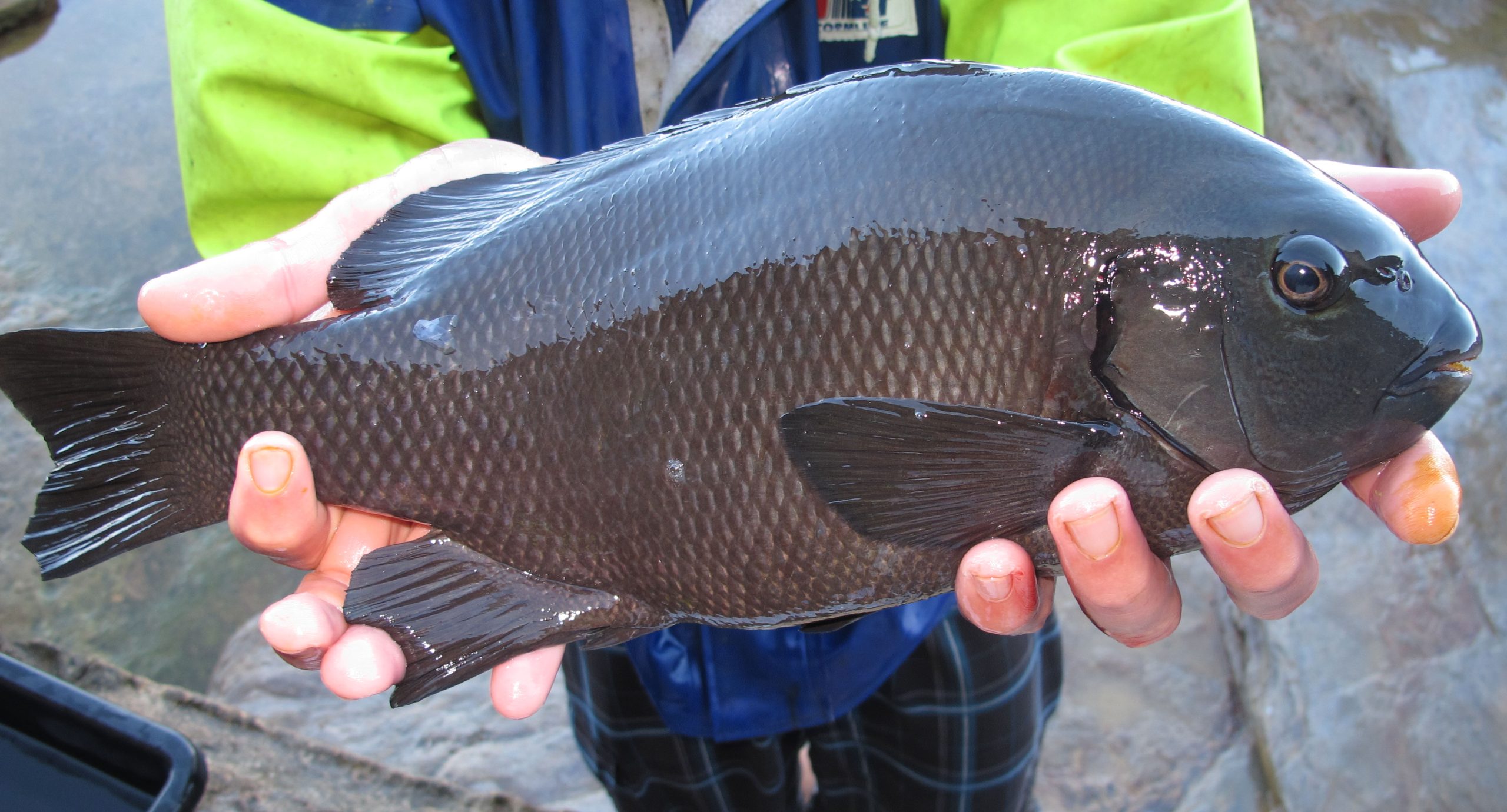
A THREE year collaborative research project between NSW Department of Primary Industries and University of New South Wales, with funds provided from the NSW Saltwater Recreational Fishing Trust has provided an insight into the secretive life of the black drummer, aka “Pigs” or eastern rock blackfish. This project is the first to provide data on the growth rates, reproductive biology and movements of black drummer, information essential for the sustainable management of the species.

ABOVE: Sectioned otolith (earstone) of a 36 year old black drummer showing annual growth rings.
Studies examining the age and growth rates of black drummer have shown fish can live to ages in excess of 45 years. The average age of a 45cm fish, often kept for the table, is likely to be around 17 years of age. In addition to their longevity black drummer reach sexual maturity quite late in life. Male black drummer of the central NSW reach maturity at approximately 32cm and 4yrs of age, while females reach maturity later at 39cm and 6 years of age. Fish from southern NSW mature at a larger size and age than those from Central NSW, with males reaching maturity at 37cm and 7 years and females at 42 cm and 9 years of age. Black drummer of central and southern NSW spawn during late spring and summer, larger and older fish produce significantly more eggs than their smaller counterparts. Their larvae then drift with ocean currents until they reach around 1.4cm in length before recruiting to intertidal rock pools where they remain until approximately 15 cm in size and 1 year of age. Juveniles then move to shallow subtidal rocky-reefs where they inhabit surge regions, caves and crevices.
An acoustic tracking study examining the movement of black drummer has shown fish are site attached and use very small areas. Some fish remained at the headland at which they were caught for the duration of the 1 ½ year tracking study, with no large scale movements observed. The depth range used by the tagged fish ranged from 0.4 to 17 m, with the majority of fish being generally detected at 2 – 4 m depth. In general fish were most active during the day, with fish likely seeking refuge in caves and crevices at night.

Given their longevity, slow growth, late maturation and site attachment, black drummer populations may be vulnerable to over exploitation in heavily fished regions. The largest fish sampled during the study was a 63cm specimen of 35 years of age, a trophy fish for any rock angler, though significantly smaller than the maximum recorded size. Given their longevity it is possible that larger individuals may be removed from the population as a result of fishing pressure. Next time you catch a good “pig”, remember that it may well be older than you!


















